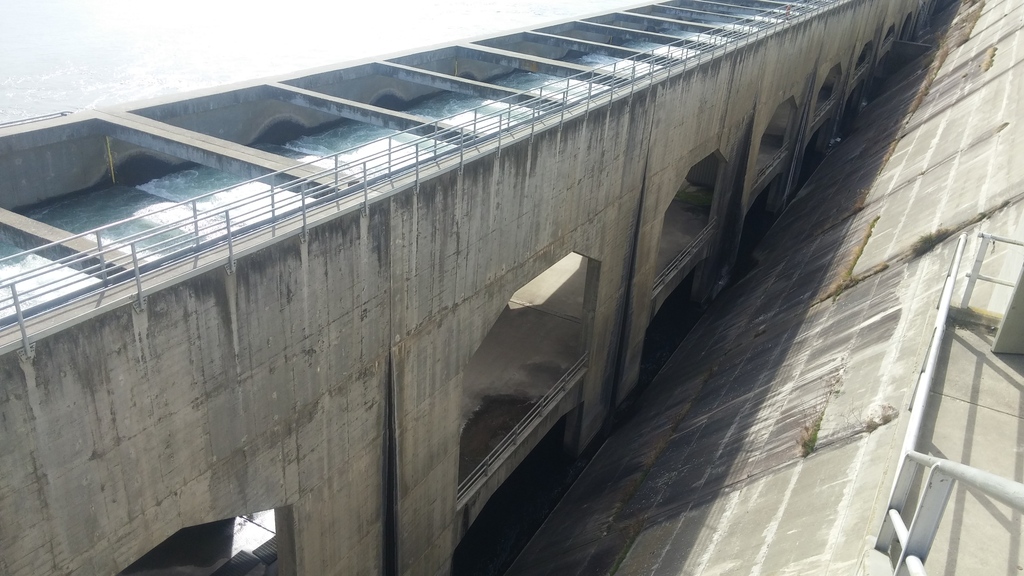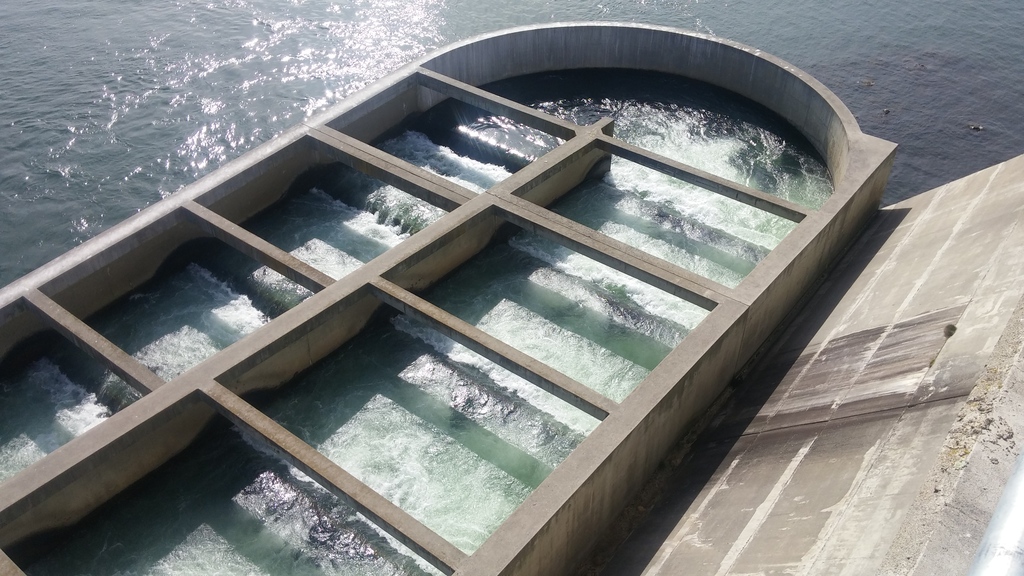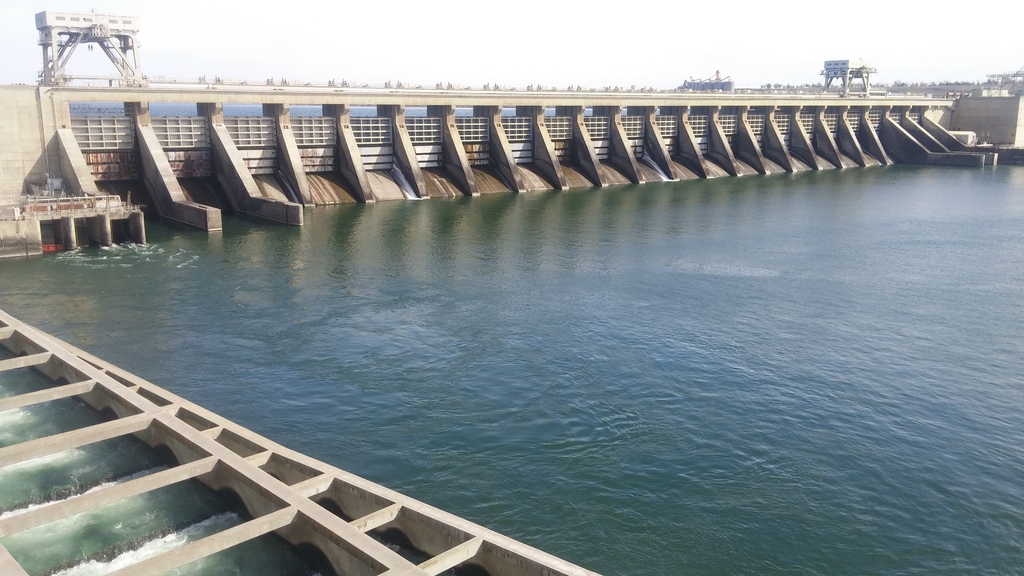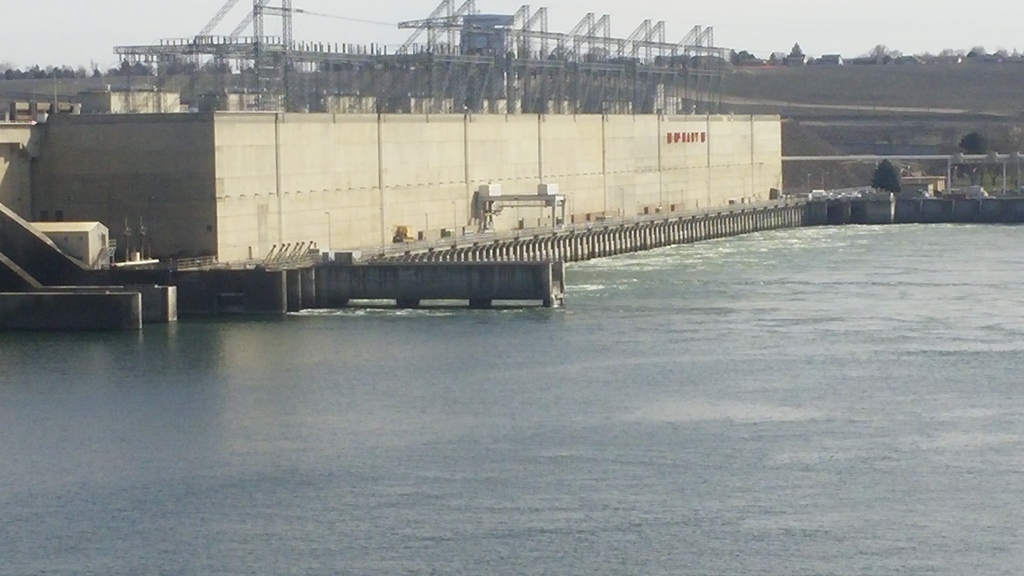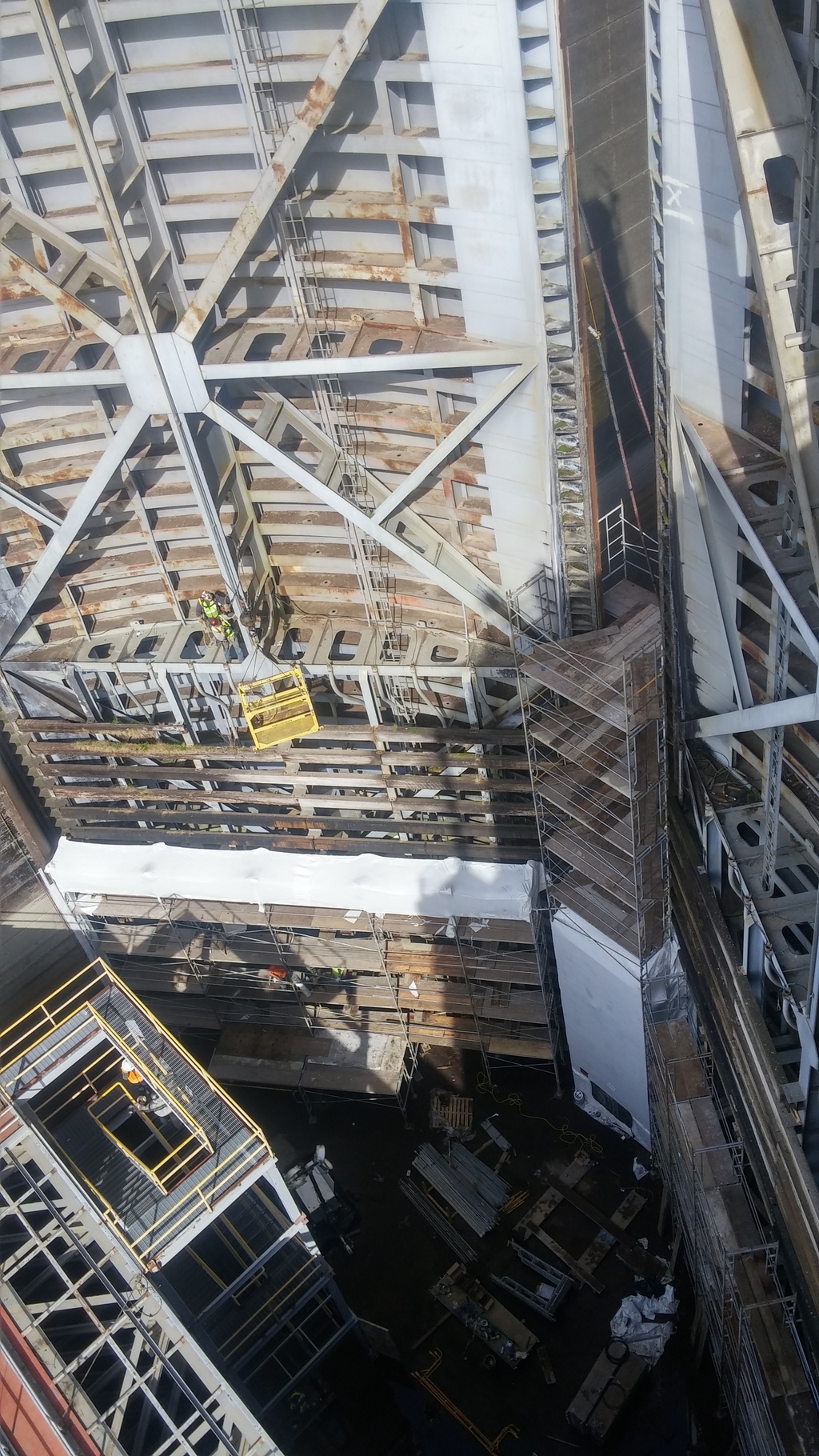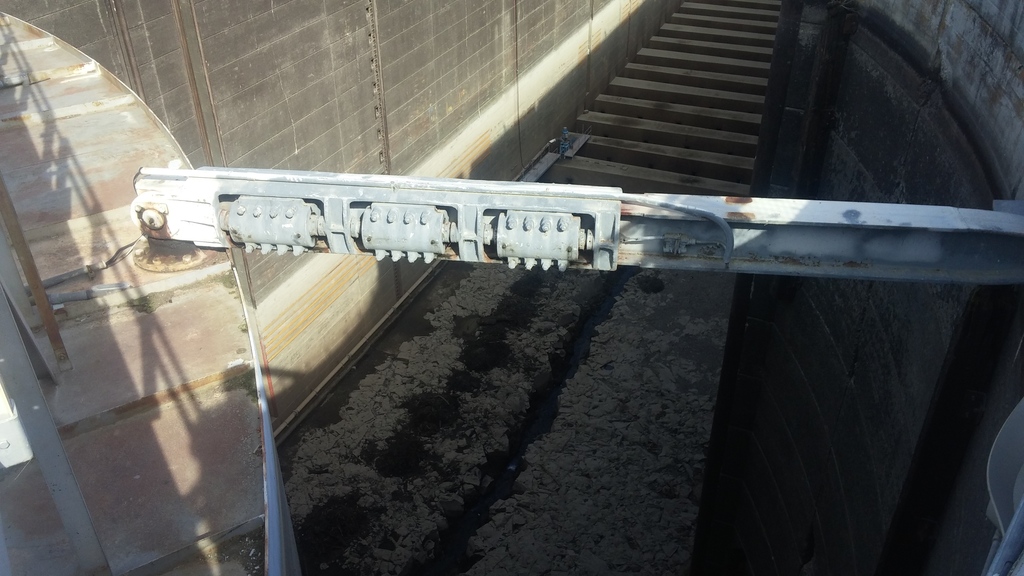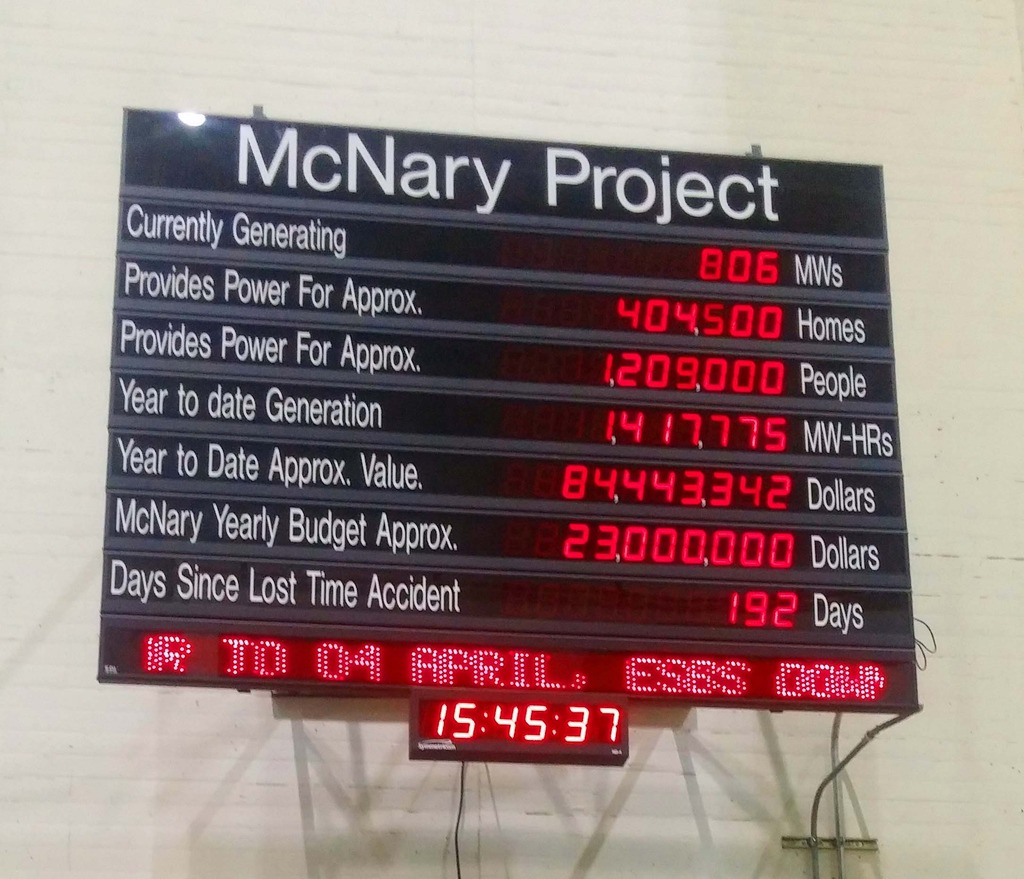Every once in awhile an opportunity comes along that you realize is truly a once-in-a-lifetime opportunity. I recently had one of those and thought I’d share what I learned with you. That opportunity was to view the lock at McNary Dam when it was completely empty of water.
Normally, even during normal lock operations, the lock is not open for tours except for a twice annual Open House. GW and I have been to one of those and it’s interesting to see the lock from the walkways at the top. Prior to 9/11 the dams were pretty much open any time for tours. That changed and now they only have two times a year when they’re open.
However, it’s extremely rare (read that as “unheard of”) for a civilian to get a chance to see the lock when it’s been drained for maintenance. They do a major maintenance on the lock that includes draining it about every third or fourth year. When that happens the lock is closed to all navigation, and it usually takes about a 4-5 weeks for the maintenance to be completed.
I suppose I should step back a bit and explain how this all came about. I have a long time friend who works at McNary Dam as an administrator. He’s in charge of their apprentice program, an ongoing program that turns out journey-level people trained in the various crafts needed at the dams. I ran into this friend a while back and we got talking about the upcoming maintenance and the lock closure. I asked him if it would be possible to get a tour of the lock when it was empty. He said he’d never heard of that happening but he’d look into it.
He did whatever it took to make it happen and on May 13 (Friday the 13th) he gave me a tour of the lock. The photos I have were taken in areas where I’d been given permission to take pics. There were some areas (the room where all the turbines that generate power are located) where no photos are allowed, and I respected that.
So you can see what the area I’m talking about looks like, here’s a Google Earth shot of McNary.
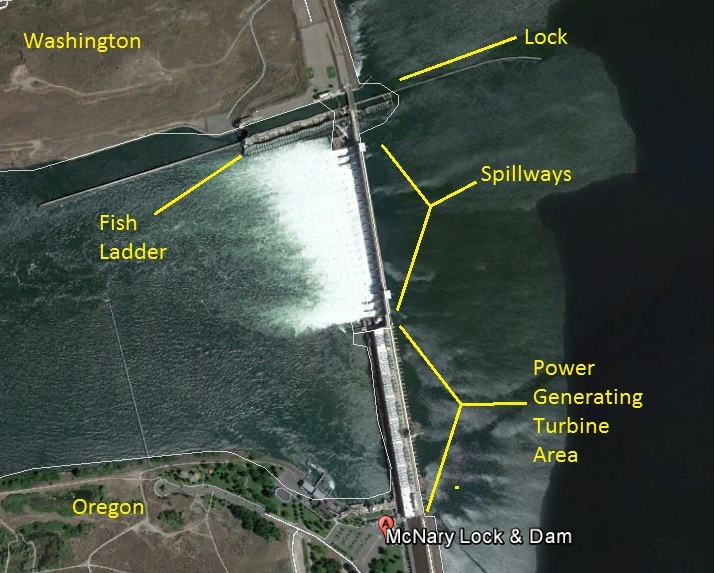
Before we started the tour I had to be fitted with a hard hat. Apparently they don’t know how hard headed most boaters are, and me in particular.
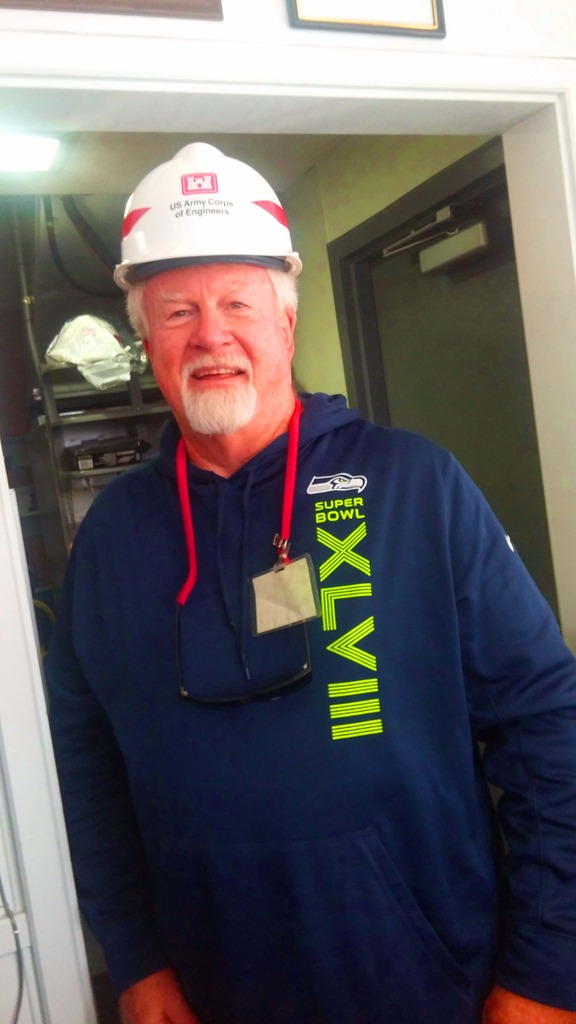
So here’s what we saw that you don’t normally see at the bottom of the lock. With the water removed, we could actually look down and see the bedrock at the bottom. This is the bottom of what used to be the river, though I’d guess it’s been ground down to be pretty flat. When the lock has water in it, this flat area usually has about 15’-18’ of water above that bedrock.
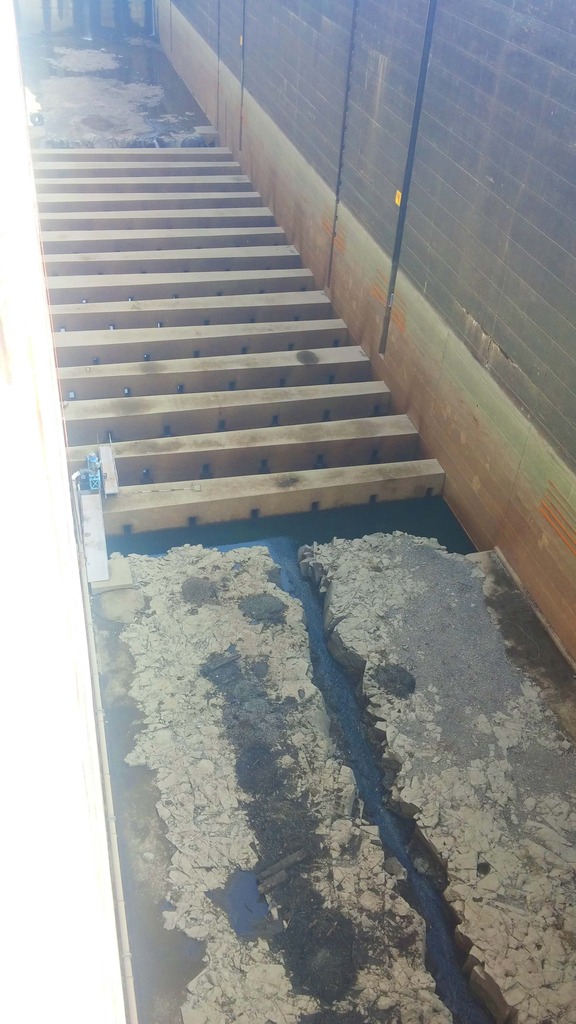
This shot looks west toward the downstream end of the lock.
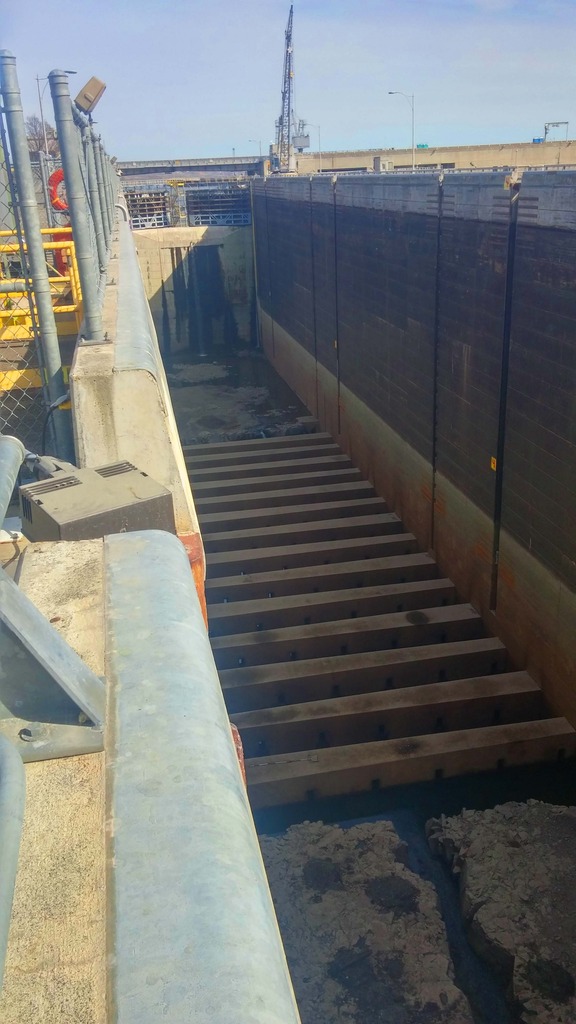
Those rectangular shape structures on the bottom are baffles and are used to diffuse the flow of water into the locks. The water comes into the lock without the use of any pumps, just the water pressure from the upstream side of the lock. The “tainter” valves are opened, the water comes in and is diffused by the baffles and fills the lock. The water comes in and fills the lock to the point where the water level inside the lock is the same as the level upstream from the lock.
Here’s what a tainter valve looks like. It pivots at the end of the arms and is raised and lowered to allow water to pass or the flow shut off.
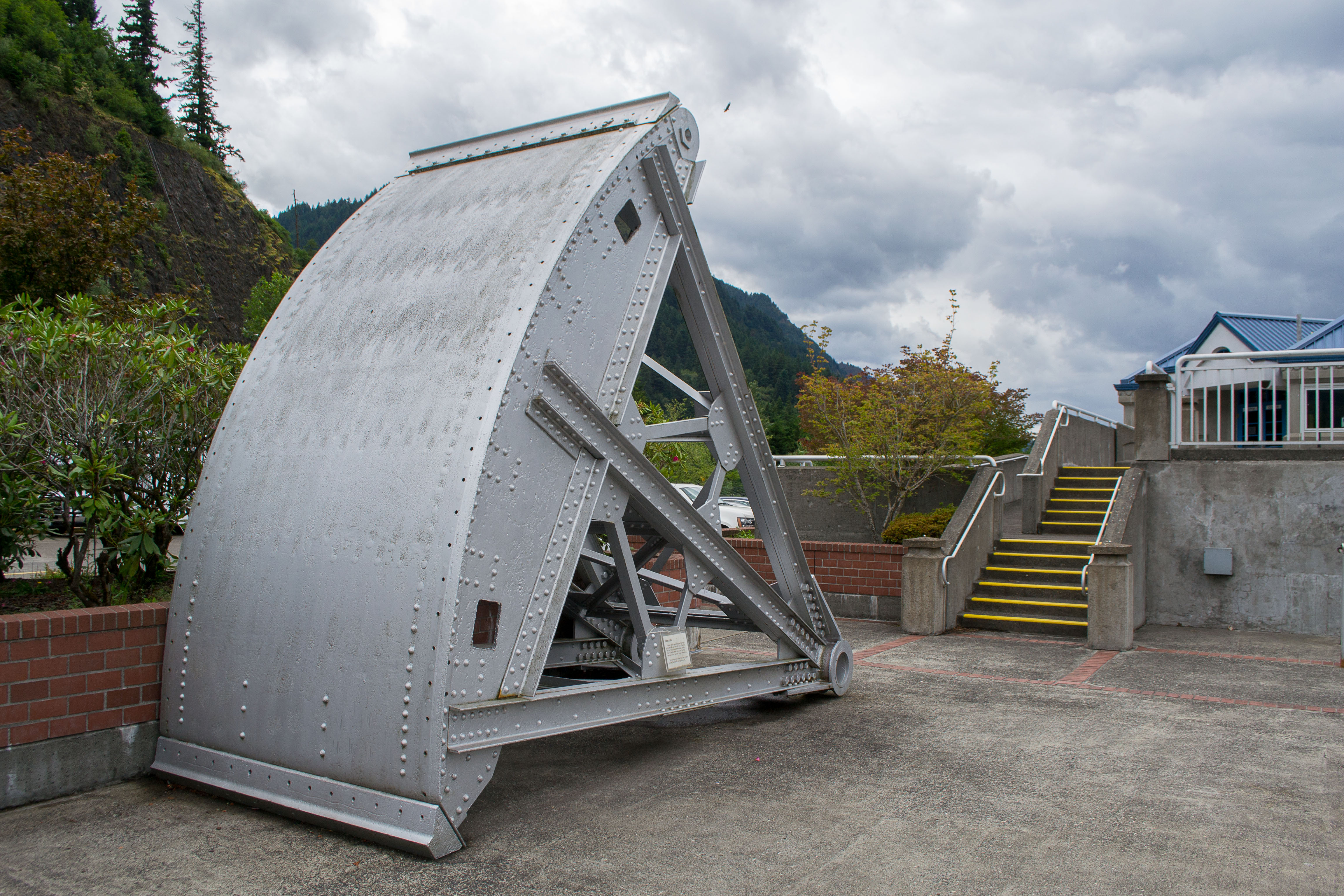
Here’s a drawing of a tainter value that’s used at Bonneville Dam to control the amount of water that passes over the spillways.

This is a drawing that demonstrates how the locks actually work. In the top photo, the upstream tainter value is open and water has flowed into the lock and the boat enters. In the center picture the upstream gate and tainter valve are closed and the downstream tainter valve is open. When the water reaches the level of the water outside the downstream gate, the gate is opened and the boat moves out.
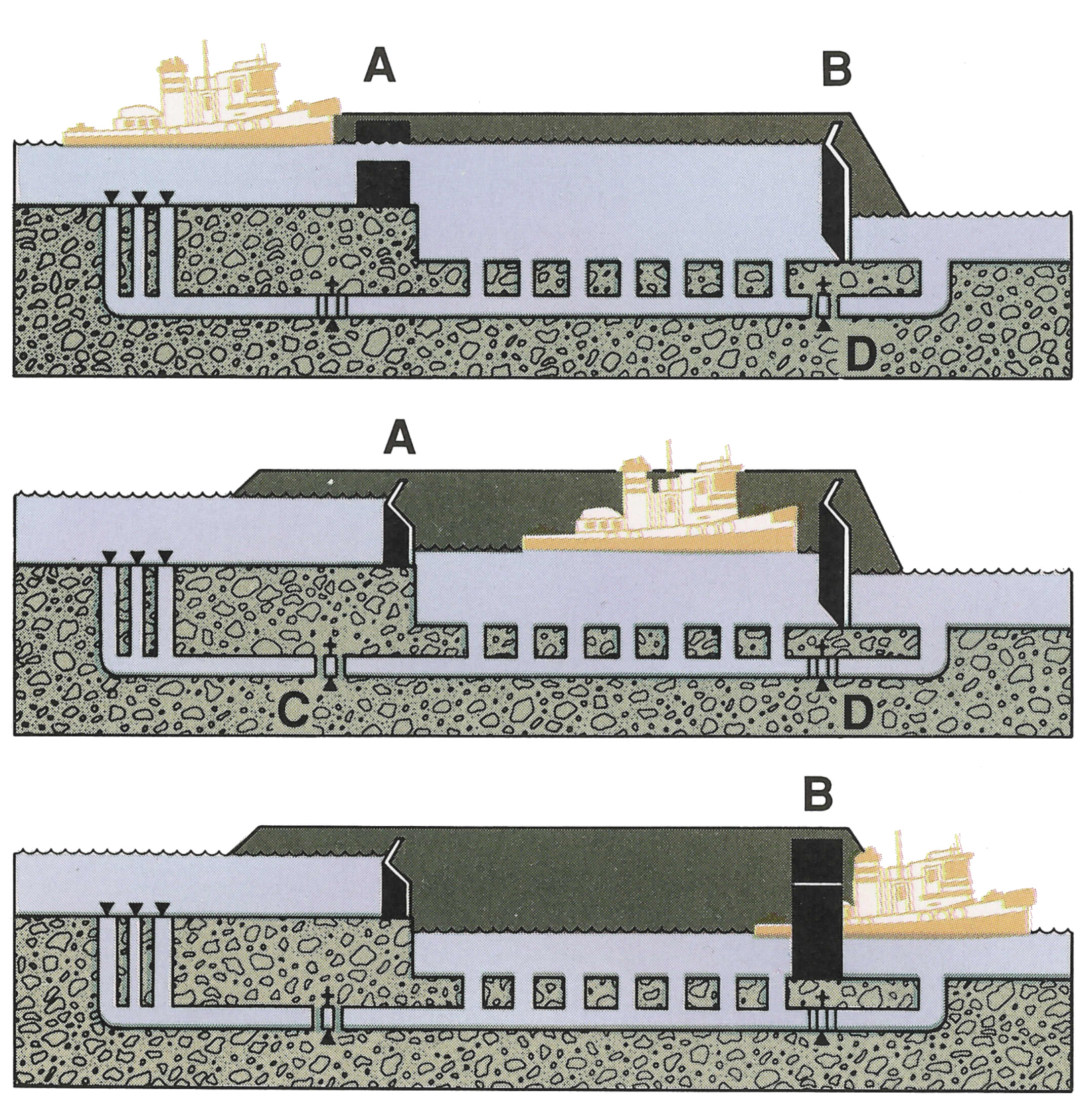
Similarly, when the lock is to be emptied, the upstream tainter valve is closed, the downstream valve opened and the water flows out until the water level inside the dam is the same as the water level at the downstream end. Again, no pumps are used, just the pressure of the water in the lock that is at a higher level than the water at the downstream end of the lock.
There is a channel that’s been cut down the center of the bedrock because there is no practical way to keep all water from coming into the lock. That channel keeps the water in the center of the lock and allows it to flow to the upstream end of the lock where it is pumped out.
When they are working on the upstream and downstream gates to the lock they have to have the gates open. To keep large amounts of water from coming into the lock they use these steel structures, called “stop logs”. They stack the stop logs in specially built channels that are cut into the lock walls and the stop logs create a sort of a coffer dam. Here are a few shots of those. The last picture has the weight of each of the structures stenciled on the end.
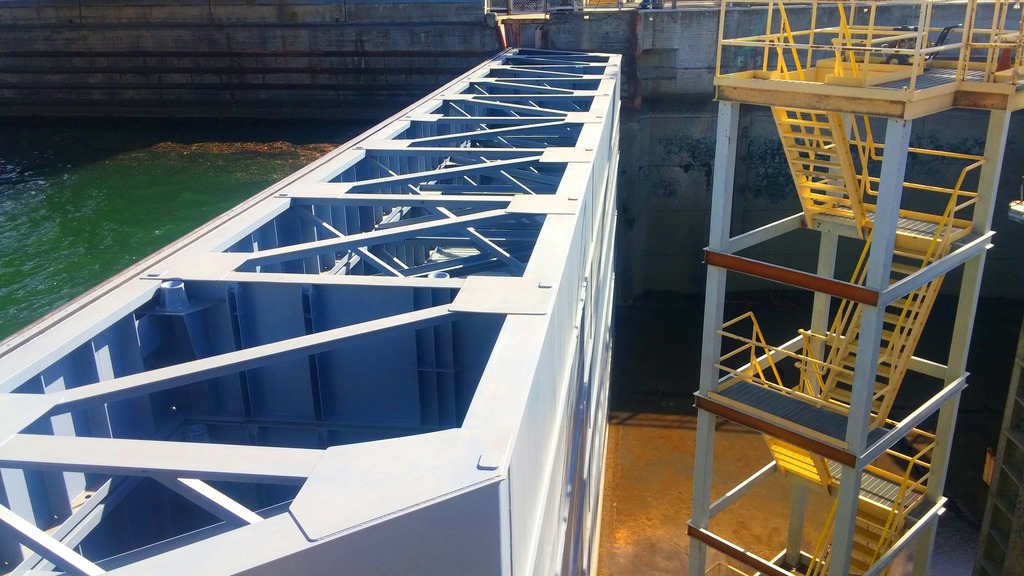
Here’s a pic looking East, up the Columbia River from the lock.
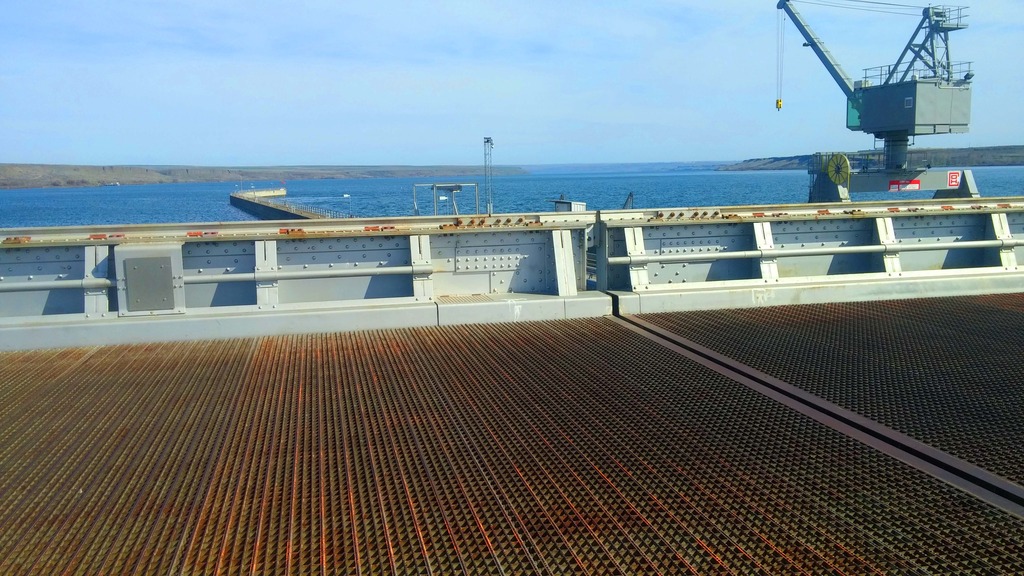
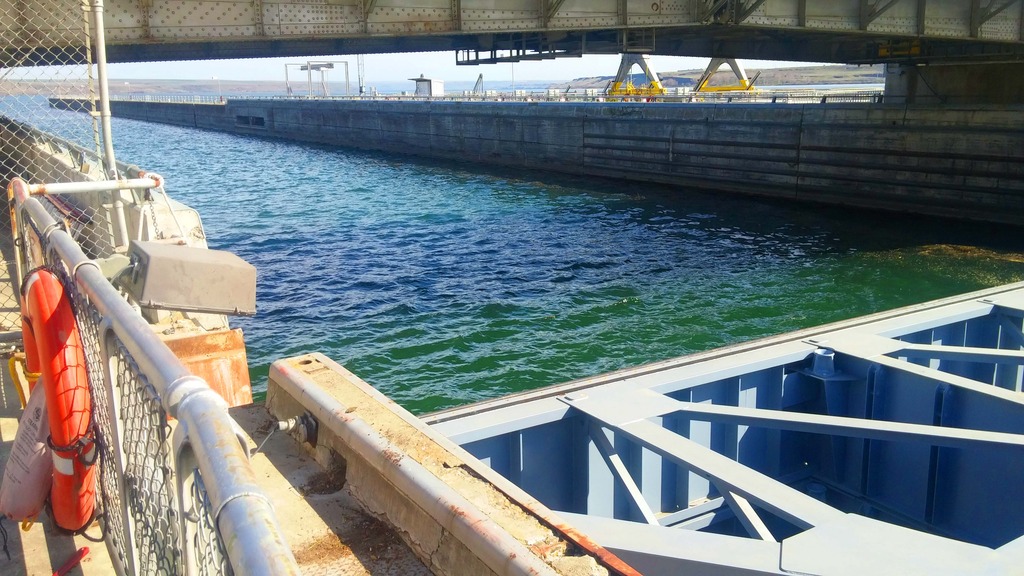
Here’s the photo with the weights stenciled on the end of each of the stop logs. Pretty impressive scale these guys work with.
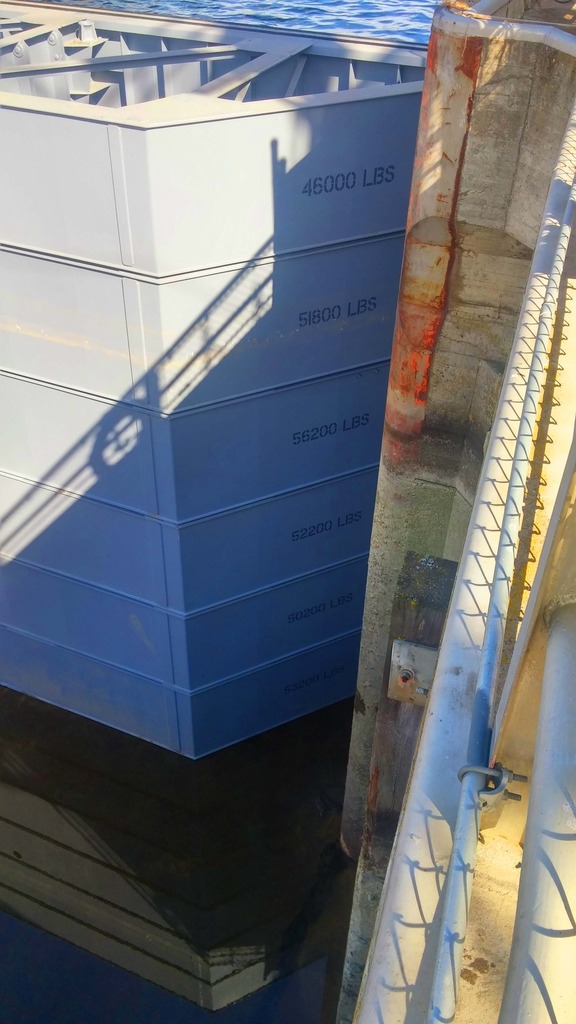
Here’s a photo of the downstream side of the upstream gate. You can see the scaffolding they’ve built to do their maintenance. I don’t know exactly how far down it is from where we are to the bedrock at the bottom, but I’d guess at about 115’ (15’ from the high water level to the walkway we’re on, about 85’ of lift plus about 15’ of water when the level is down). It’s far enough that I was pretty careful leaning over the railing.
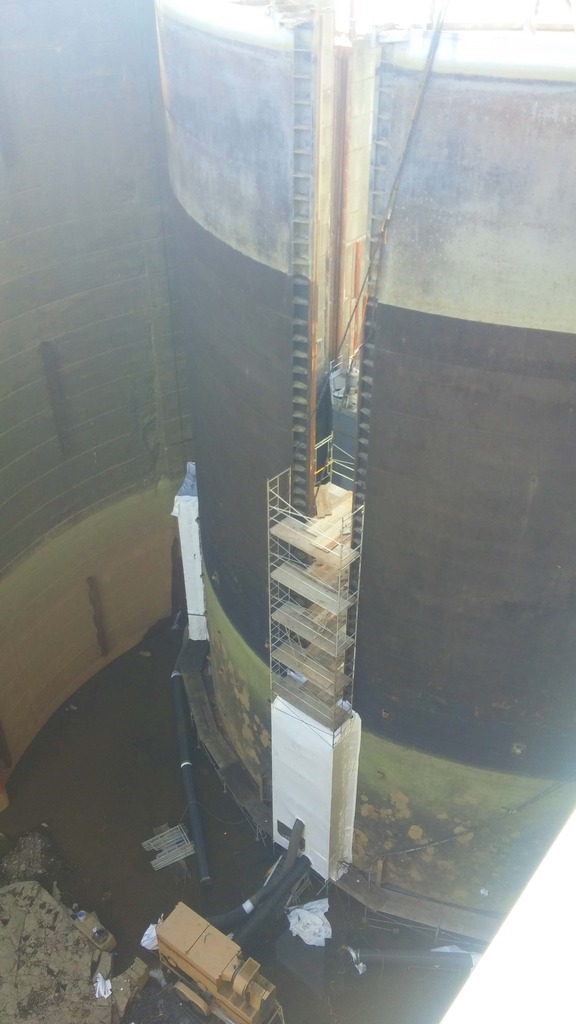
Continued....
Normally, even during normal lock operations, the lock is not open for tours except for a twice annual Open House. GW and I have been to one of those and it’s interesting to see the lock from the walkways at the top. Prior to 9/11 the dams were pretty much open any time for tours. That changed and now they only have two times a year when they’re open.
However, it’s extremely rare (read that as “unheard of”) for a civilian to get a chance to see the lock when it’s been drained for maintenance. They do a major maintenance on the lock that includes draining it about every third or fourth year. When that happens the lock is closed to all navigation, and it usually takes about a 4-5 weeks for the maintenance to be completed.
I suppose I should step back a bit and explain how this all came about. I have a long time friend who works at McNary Dam as an administrator. He’s in charge of their apprentice program, an ongoing program that turns out journey-level people trained in the various crafts needed at the dams. I ran into this friend a while back and we got talking about the upcoming maintenance and the lock closure. I asked him if it would be possible to get a tour of the lock when it was empty. He said he’d never heard of that happening but he’d look into it.
He did whatever it took to make it happen and on May 13 (Friday the 13th) he gave me a tour of the lock. The photos I have were taken in areas where I’d been given permission to take pics. There were some areas (the room where all the turbines that generate power are located) where no photos are allowed, and I respected that.
So you can see what the area I’m talking about looks like, here’s a Google Earth shot of McNary.

Before we started the tour I had to be fitted with a hard hat. Apparently they don’t know how hard headed most boaters are, and me in particular.

So here’s what we saw that you don’t normally see at the bottom of the lock. With the water removed, we could actually look down and see the bedrock at the bottom. This is the bottom of what used to be the river, though I’d guess it’s been ground down to be pretty flat. When the lock has water in it, this flat area usually has about 15’-18’ of water above that bedrock.

This shot looks west toward the downstream end of the lock.

Those rectangular shape structures on the bottom are baffles and are used to diffuse the flow of water into the locks. The water comes into the lock without the use of any pumps, just the water pressure from the upstream side of the lock. The “tainter” valves are opened, the water comes in and is diffused by the baffles and fills the lock. The water comes in and fills the lock to the point where the water level inside the lock is the same as the level upstream from the lock.
Here’s what a tainter valve looks like. It pivots at the end of the arms and is raised and lowered to allow water to pass or the flow shut off.

Here’s a drawing of a tainter value that’s used at Bonneville Dam to control the amount of water that passes over the spillways.

This is a drawing that demonstrates how the locks actually work. In the top photo, the upstream tainter value is open and water has flowed into the lock and the boat enters. In the center picture the upstream gate and tainter valve are closed and the downstream tainter valve is open. When the water reaches the level of the water outside the downstream gate, the gate is opened and the boat moves out.

Similarly, when the lock is to be emptied, the upstream tainter valve is closed, the downstream valve opened and the water flows out until the water level inside the dam is the same as the water level at the downstream end. Again, no pumps are used, just the pressure of the water in the lock that is at a higher level than the water at the downstream end of the lock.
There is a channel that’s been cut down the center of the bedrock because there is no practical way to keep all water from coming into the lock. That channel keeps the water in the center of the lock and allows it to flow to the upstream end of the lock where it is pumped out.
When they are working on the upstream and downstream gates to the lock they have to have the gates open. To keep large amounts of water from coming into the lock they use these steel structures, called “stop logs”. They stack the stop logs in specially built channels that are cut into the lock walls and the stop logs create a sort of a coffer dam. Here are a few shots of those. The last picture has the weight of each of the structures stenciled on the end.

Here’s a pic looking East, up the Columbia River from the lock.


Here’s the photo with the weights stenciled on the end of each of the stop logs. Pretty impressive scale these guys work with.

Here’s a photo of the downstream side of the upstream gate. You can see the scaffolding they’ve built to do their maintenance. I don’t know exactly how far down it is from where we are to the bedrock at the bottom, but I’d guess at about 115’ (15’ from the high water level to the walkway we’re on, about 85’ of lift plus about 15’ of water when the level is down). It’s far enough that I was pretty careful leaning over the railing.

Continued....

